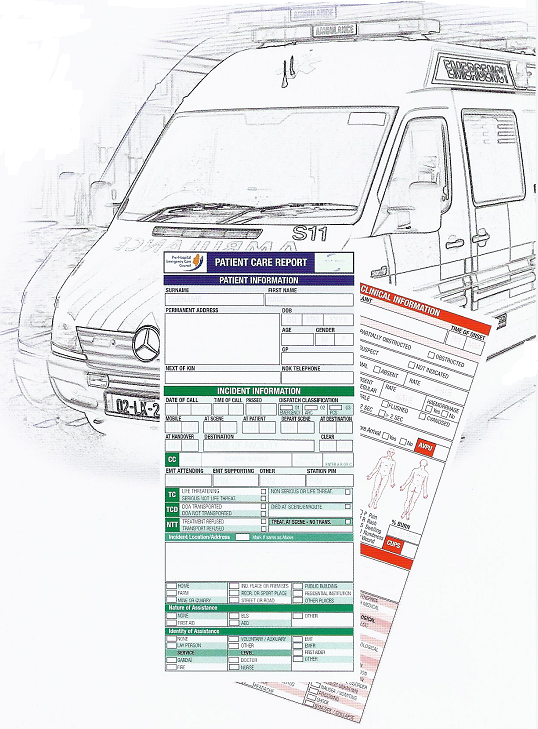National Patient Care Report
The Beginning

A broad consultive project called the Building Capacity was undertaken in 2002 which aimed at developing an agreed data set and definitions which is the backbone to the Patient Care Report (PCR), the electronic Patient Care Report [ePCR) and the Information Services Gateway. During 2002 ninety one (91) emergency ambulance stations weft visited by PHECC representatives. The responses from the EMTs was overwhelming and the information exchange gave impetus for the idea of the Patient Care Report pilot project. A sample of 303 volunteer EMTs, forwarded 3,352 patient care reports and feedback was received from 78 EMTs regarding the ease of use, clinical content, advisory content. design/layout and suggestions for improvement. From nine Irish ambulance services (7 statutory, 1 voluntary/auxiliary, 1 private) data was inputted, verified and analysed by the PHECC office. Following a further draft of the PCR and consultation with EMT's the National Patient Care Report Edition 1 was implemented in July 2004.
Rationale for a Patient Care Report
You may ask, "why do we need a PCR?"
In the report, 'Strategic Review of the Ambulance Service 2001'
it was stated;
"To ensure successful outcomes in terms of health and social gain and to meet increasing demands on services in terms of quality and quantity, there is a need for improvements in national co-ordination of the emergency services to ensure a consistent and unified approach to pre-hospital emergency care and to ensure that all services operate as one entity. Standards of performance, methods of measurement and evaluation including definition of terms should be applied notionally."
With the PCR the Ambulance Service is now in an excellent position to report on service's activities and patient outcomes in a way not previously possible. Reliable data is essential to justify future growth and to ensure services are best utilised.